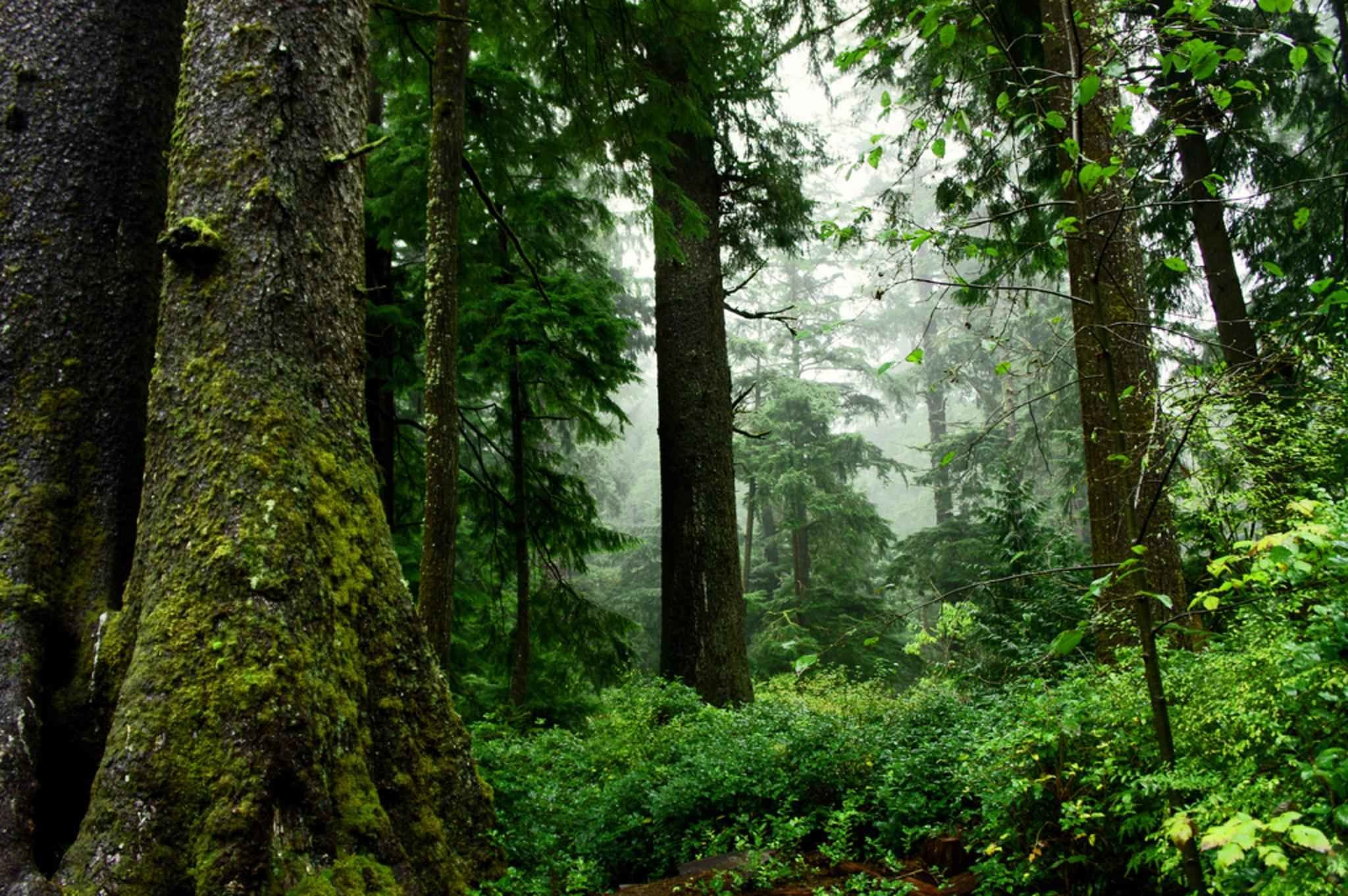Support journalism that lights the way through the climate crisis by June 3
Shortly after a new EU law was introduced to crack down on the import of unsustainable forest products that result in “forest degradation,” Canada went to work defining the term.
Deforestation is widely understood as the razing of forests, largely tropical, to create farmland. However, forest degradation doesn’t have a universally agreed-upon definition. The EU’s new trade regulations define degradation in a way that could impact exports from Global North countries whose logging practices have often avoided scrutiny because they replant the trees rather than convert the harvested areas to farmland.
Countries that export forest products, including Canada, are working behind the scenes to try to soften the trade regulations.
Last December, a leaked letter revealed Canada lobbied to water down the EU’s proposed regulations, specifically asking the EU to reconsider the “burdensome traceability requirements” and arguing degradation should not be included in the EU regulations.
The letter from the Canadian ambassador to the EU, Ailish Campbell, notes the country’s annual deforestation rate is less than 0.2 per cent, so Canada should be given special consideration as a “low-risk” nation, reported The Guardian.
On March 17, the Canadian Council of Forest Ministers (CCFM) started soliciting views from external stakeholders as part of its work to create a made-in-Canada “internationally acceptable” definition for forest degradation, revealed a memo obtained by Canada’s National Observer through a federal access-to-information request.
Canada is a major global player when it comes to wood product exports — the country was the world’s top exporter of wood products in 2021, according to international trade data published by the Observatory of Economic Complexity.
The EU regulations have “the potential to impact over [$1 billion] in forest and agricultural products exported from Canada to the EU,” Jean-Pierre Godbout, a spokesperson for Global Affairs Canada, told Canada’s National Observer in an emailed statement. In 2022, Canada exported over $586 million worth of forest products and $768 million worth of soy within the scope of the regulation, Godbout pointed out.
Natural Resources Canada said work to define the term forest degradation began in early 2023 but the department did not say when the definition will be released, just that “the CCFM will continue making progress on the issue throughout 2023.”
The list of stakeholders is redacted, but the Natural Resources Canada memo to the deputy minister said it includes Indigenous partners, non-governmental environmental organizations, academics, third-party certification schemes, industry stakeholders and federal departments like Global Affairs Canada and Environment and Climate Change Canada.
The EU’s new regulations came into force June 29 and aim to ensure certain goods imported to the EU don’t contribute to deforestation or forest degradation. In the past, international focus on deforestation in the Global South deflected scrutiny from Global North countries like Canada whose logging industries don’t convert forests to farmland but do have impacts, said Jennifer Skene, the natural climate solutions policy manager for the Natural Resources Defense Council (NRDC).
“When it comes to forestry, to logging, the notion is, even if you clear cut a stand and there's no trees anywhere, it's filled with stumps, that is still a forest because the intention is to allow some degree of tree cover to return to allow it to sort of satisfy the minimum definition of what is a forest,” said Skene in an interview with Canada’s National Observer.
The EU’s new rules bring the logging industry’s role in forest degradation into the spotlight.
The new regulations define forest degradation as “structural changes to forest cover,” referring to the conversion of primary forests to planted forests or wooded areas. For example, when a primary forest is logged and replanted as a monoculture or the scenario Skene described where the land is still technically the woods but much of the tree cover is removed. Wood harvesting is allowed under the regulations, as long as it doesn’t result in a transformation falling under the definition of degradation.
“What that does is for the very first time explicitly defines degradation in a way that would clearly apply to certain types of industrial logging in Canada,” said Skene.
Canada has been at the epicentre of creating international forest policy for a long time, playing a key role in helping keep the focus on deforestation in the Global South, said Skene. But the EU’s move to include forest degradation in the regulations “really squarely puts a lens on Canada's practices and Canada, of course, wants to nip that in the bud” and reclaim the narrative, she said.
Under the new rules, companies must abide by traceability requirements to prove their products don’t contribute to deforestation or forest degradation in the EU or anywhere else in the world. Companies must mark products with geographical coordinates and provide satellite imagery to verify their claims. Affected products include palm oil, cattle, soy, coffee, cocoa, timber and rubber, as well as derived products, such as beef, furniture or chocolate.
Specifically, Canada is concerned “the requirement for geo-location traceability to source of production could result in significant increased costs for Canadian exports to the EU, without delivering the associated benefits,” reads Godbout’s statement.
As of June when the rules came into force, operators and traders were given 18 months to implement them while the EU assesses countries to determine if they are high, standard, or low risk.
Products from low-risk countries will be subject to a simplified due diligence procedure, according to the EU Commission. The proportion of checks on an operator corresponds to the risk level of the country it operates in: nine per cent for high-risk, three per cent for standard-risk and one per cent for low-risk countries.
Indonesia and Malaysia — the world’s biggest palm oil exporters — have also criticized the EU regulations.
Forest degradation and deforestation increase the amount of planet-warming greenhouse gas emissions entering the atmosphere. The Intergovernmental Panel on Climate Change estimates 11 per cent of global emissions between 2007 and 2016 are from forestry and other land uses, including deforestation. Canada’s forests have hit a tipping point and are now emitting more carbon than they sequester, according to analysis by Canada’s National Observer columnist Barry Saxifrage.
Primary forests store approximately 30 to 50 per cent more carbon than previously logged forests, more than 100 concerned scientists wrote in a November 2022 letter urging world leaders to address forest degradation. The letter was aimed at countries — including Canada — that signed an international agreement to halt and reverse forest loss and land degradation by 2030.
Natural Resources Canada said there are many factors to consider when it comes to creating a forest degradation definition and reporting framework.
“Whether a change in forest condition is understood to be degradation can depend on a number of factors, such as: forest ecosystem type; how resilient a forest is; the size of the forest area under consideration; what time period is being considered; or which values are being assessed,” reads the emailed statement from Natural Resources Canada.
“The CCFM’s ongoing work seeks to identify the elements of degradation and to define a reporting framework to measure degradation in a manner that is grounded in science,” according to the department.
Skene is concerned those conversations are taking place behind closed doors with a curated list of stakeholders invited to participate; her organization is not on the list.
“The whole process is being shaped by policymakers whose mandates and interests are focused on promoting the welfare of the forestry sector, so from the very beginning, the way that this is being framed is deeply problematic,” said Skene.
The Canadian Council of Forest Ministers is composed of 14 federal, provincial and territorial ministers. The council’s stated objective is to advance sustainable forest management nationally and internationally as well as share information on forest sector issues and maintain scientific information to support forest management decision-making.
Natasha Bulowski / Local Journalism Initiative / Canada’s National Observer
Taking the position that a
Taking the position that a razed forest is still a forest, despite all that remains is stumps, would mean that all the areas burned by wildfires are still forests.
Gimmea a break!
I wonder where the .02%
I wonder where the .02% figure comes from. Anyone who grew up close to forests in BC, for instance, and who's visited in the last decade or so, can plainly see that there are hardly any trees left. That's why small diameter trees started being logged, in the first place, going back now 1/3-1/2 a century ago.
Our forests have not been
Our forests have not been sustainable for over 20 years, yet conservative politicians still rely on them to gaslight their voters






Comments